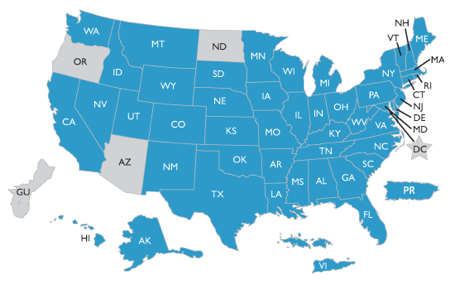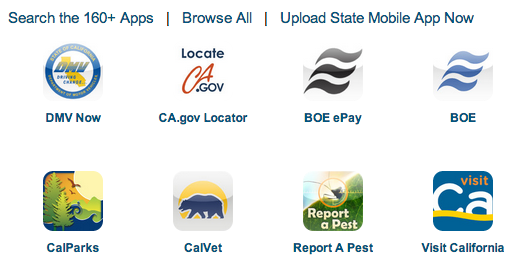A Catalog of Every Government Mobile App in Every State
Government-created mobile apps are growing in popularity and utility and boosting citizen engagement, giving governments a new platform with which to share information about their innovative work.
The National Association of State Chief Information Officers (NASCIO) has released an online catalog of mobile apps created by states, listed by location and function. An interactive map of the United States makes it easy to navigate each state; by clicking a state, a user can see and download all of the apps listed for that location.
Greg Crowe outlined the new resource in a recent blog post on GCN:
Currently, there are 160 apps in the Catalog, which is a small fraction of what is actually in existence, but more are being added all the time — the home page includes a link states can use to update or add apps. The site currently features apps from every state except Arizona, North Dakota and Oregon. Puerto Rico and the U.S. Virgin Islands also have apps listed, though the District of Columbia and Guam do not.
The catalog covers a range of topics, including public safety, health and wellness, public assistance, employee assistance, state portal, traffic/road conditions and parks and recreation. You can, for example, check out California’s Locator app, Florida’s State Parks Outdoor Guide, or West Virginia’s Suspicious Activity Reporting app.
"This tool offers a convenient way to see what other states are producing in terms of mobile apps, and allowing states to generate ideas for their own state or territory," said Brenda Decker, NASCIO president and Nebraska CIO. "Some states lead the way in mobile app development and can pose as models for those growing their mobile app capabilities."
Numerous case studies point to the importance of mobile services in facilitating government-citizen relationships and allowing them to flourish. Now that 51 percent of adults in the United States own smartphones, it is crucial for governments to interact with those citizens where they feel most comfortable. For example, 311 apps are already paying huge dividends in places like Lincoln, Neb., where roughly 25 percent of incident and service reports are submitted with the city’s app.
Across the board, governments are receiving more reports of graffiti and potholes, and smartphones are making it easy for governments to collect valuable information, such as photos and GPS location.
As more governments go mobile, relationships with local developers will be key to creating successful services. Most apps are the result of collaboration between public and private organizations, a strategy that saves taxpayer dollars and boosts local economies.
Mobile is the future, and NASCIO’s new tool is a perfect opportunity for governments to learn from one other.










